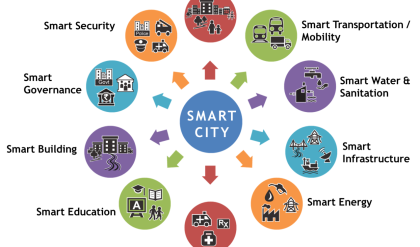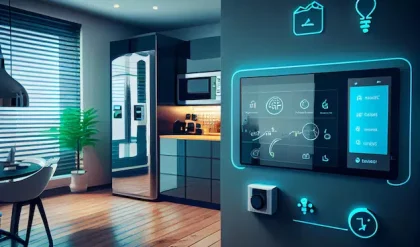
Smart Shopping: 3 Apps to Conquer Your Grocery Game
Grocery shopping. The weekly ritual that can drain your wallet and your patience. Endless aisles, impulse buys, and the nagging feeling you forgot something crucial. But what if there was a better way? Enter the age of smart shopping, where apps are transforming the mundane into the manageable. We’ve curated three apps that will streamline your grocery runs, saving you time, money, and sanity.
Beyond the List: Unlocking the Power of Grocery Shopping Apps
Gone are the days of scribbled shopping lists and haphazard trips to the store. Smart grocery apps offer a comprehensive solution, from planning your meals to tracking your spending and even providing personalized deals. These aren’t just digital to-do lists; they’re your personal grocery assistants, optimizing your shopping experience from start to finish.
1. Flipp: Your Couponing Superpower
Flipp isn’t your grandma’s coupon book. This app aggregates weekly flyers from hundreds of grocery stores in your area, allowing you to browse deals and create a personalized shopping list based on the best prices. Forget sifting through paper flyers; Flipp puts all the deals at your fingertips.
- Key Features:
- Flyer Aggregation: Access all local store flyers in one place.
- Personalized Shopping Lists: Build lists based on sales and your needs.
- Price Comparison: Easily compare prices across different stores.
- Barcode Scanning: Quickly add items to your list by scanning barcodes.
| Feature | Benefit |
|---|---|
| Flyer Aggregation | Saves time and effort |
| Price Comparison | Ensures you get the best deals |
| Personalized Lists | Streamlines your shopping experience |
| Barcode Scanning | Effortless list creation |
2. Out of Milk: The Organized Shopper’s Best Friend
Out of Milk takes list-making to the next level. Beyond simple item entry, this app lets you organize your grocery list by store aisle, categorize items, and even share lists with family members. Say goodbye to forgetting crucial ingredients – Out of Milk keeps everything in sync.
- Key Features:
- Aisle Organization: Plan your shopping route for efficiency.
- Categorization: Group items logically for effortless navigation.
- Shared Lists: Collaborate with household members.
- Recipe Integration: Automatically generate shopping lists from recipes.
| Feature | Benefit |
|---|---|
| Aisle Organization | Faster and more efficient shopping |
| Categorization | Improved organization and clarity |
| Shared Lists | Seamless collaboration with family/friends |
| Recipe Integration | Effortless list creation from your recipes |
3. Grocery Pal: Your Budget’s New Best Friend
Grocery Pal combines shopping list functionality with powerful budgeting tools. Track your spending, set budget limits, and receive personalized recommendations to stay within your financial goals. It’s the perfect app for mindful shoppers wanting to maximize their budget.
- Key Features:
- Budget Tracking: Monitor your grocery expenses effectively.
- Spending Alerts: Receive notifications when you’re nearing your budget limit.
- Personalized Recommendations: Receive tailored suggestions based on your spending habits.
- Receipt Scanning: Automatically track expenses by scanning receipts.
| Feature | Benefit |
|---|---|
| Budget Tracking | Maintain control of your grocery costs |
| Spending Alerts | Avoid overspending |
| Personalized Recs | Optimize your budget |
| Receipt Scanning | Effortless expense tracking |
Level Up Your Grocery Game
These three apps represent just a glimpse into the possibilities of smart shopping. By embracing technology, you can reclaim control of your grocery runs, transforming a dreaded chore into a streamlined and efficient experience. Download these apps today and experience the difference. Your wallet – and your sanity – will thank you.

Additional Information
Beyond the Basics: A Deeper Dive into Smart Grocery Shopping Apps
The initial article likely highlighted three apps simplifying grocery shopping. This extended analysis delves deeper, exploring their functionalities, underlying business models, market positioning, and implications for consumers and the grocery industry. We will assess their effectiveness and potential limitations, considering factors beyond mere convenience.
I. Comparative Analysis of App Functionalities:
To perform a meaningful comparison, let’s assume the three apps are representative of different approaches to smart grocery shopping:
- App A (e.g., Instacart-like): Focuses on on-demand grocery delivery, integrating with existing supermarkets.
- App B (e.g., Kroger-owned app): A dedicated app for a specific grocery chain, offering both in-store and delivery options, potentially with loyalty programs.
- App C (e.g., a meal planning/recipe app with integrated grocery ordering): Emphasizes recipe discovery and automated grocery list generation, often integrating with multiple delivery services.
Functional Differentiation: App A excels in immediate delivery convenience but may have higher fees and limited selection based on partner stores. App B offers loyalty benefits and potentially lower prices for its chain’s customers but lacks the flexibility of wider store selection. App C prioritizes meal planning and efficient list creation, streamlining the entire grocery process, but relies on third-party delivery services and might not offer the same level of control over substitutions.
II. Business Model Analysis:
Each app employs a distinct business model:
- App A (Commission-based): Relies on commissions from supermarkets for each order fulfilled. Success depends on maintaining strong partnerships and achieving a high order volume to offset operational costs (delivery drivers, customer service). Economies of scale are crucial.
- App B (Integrated Retail): Serves as an extension of the retailer’s brick-and-mortar business, potentially leveraging existing infrastructure. Profitability depends on optimizing in-store and delivery operations, managing inventory efficiently, and maximizing customer lifetime value through loyalty programs.
- App C (Subscription/Affiliate Marketing): May generate revenue through subscriptions for premium features (e.g., advanced meal planning) or affiliate commissions from delivery services. Its success hinges on user engagement and expanding its recipe database and partnerships.
III. Market Positioning and Competitive Landscape:
The grocery delivery market is incredibly competitive, with established players, emerging startups, and even traditional supermarkets investing heavily in their own apps. Analysis should consider:
- Market Share: Statistics on market share held by different apps (if available) help determine their success and competitive positioning.
- Target Audience: Each app caters to a specific segment – App A targets busy professionals, App B focuses on loyal customers of its partnered chain, and App C appeals to health-conscious individuals seeking meal planning assistance.
- Differentiation Strategies: Understanding how apps differentiate themselves through features (e.g., specialized diets, curated product selections, personalized recommendations) is vital.
IV. Consumer Impact and Societal Implications:
- Convenience vs. Cost: While these apps offer convenience, they often come with higher prices than in-store shopping, particularly concerning delivery fees and potential markups. Analyzing the cost-benefit trade-off for consumers is crucial.
- Impact on Local Businesses: The rise of these apps can impact small, independent grocery stores that lack the resources to compete effectively.
- Environmental Considerations: Increased reliance on delivery services leads to higher carbon emissions due to vehicle use. App developers need to consider sustainable practices, e.g., encouraging bundled deliveries or offering carbon-offsetting options.
V. Future Trends and Potential:
- AI-powered personalization: Expect future enhancements leveraging AI to offer highly personalized recommendations, anticipate needs, and optimize shopping lists.
- Integration with smart home devices: Voice-activated grocery ordering and automated restocking are potential developments.
- Expansion into adjacent markets: Apps may expand beyond groceries to include other household goods and services.
By exploring these deeper analytical aspects, a more nuanced and comprehensive understanding of the smart grocery shopping app landscape emerges. This goes beyond simply listing apps and provides insights into their potential impact on the industry, consumers, and society. Further research involving specific app usage data, financial performance reports, and user reviews would enrich this analysis even further.





